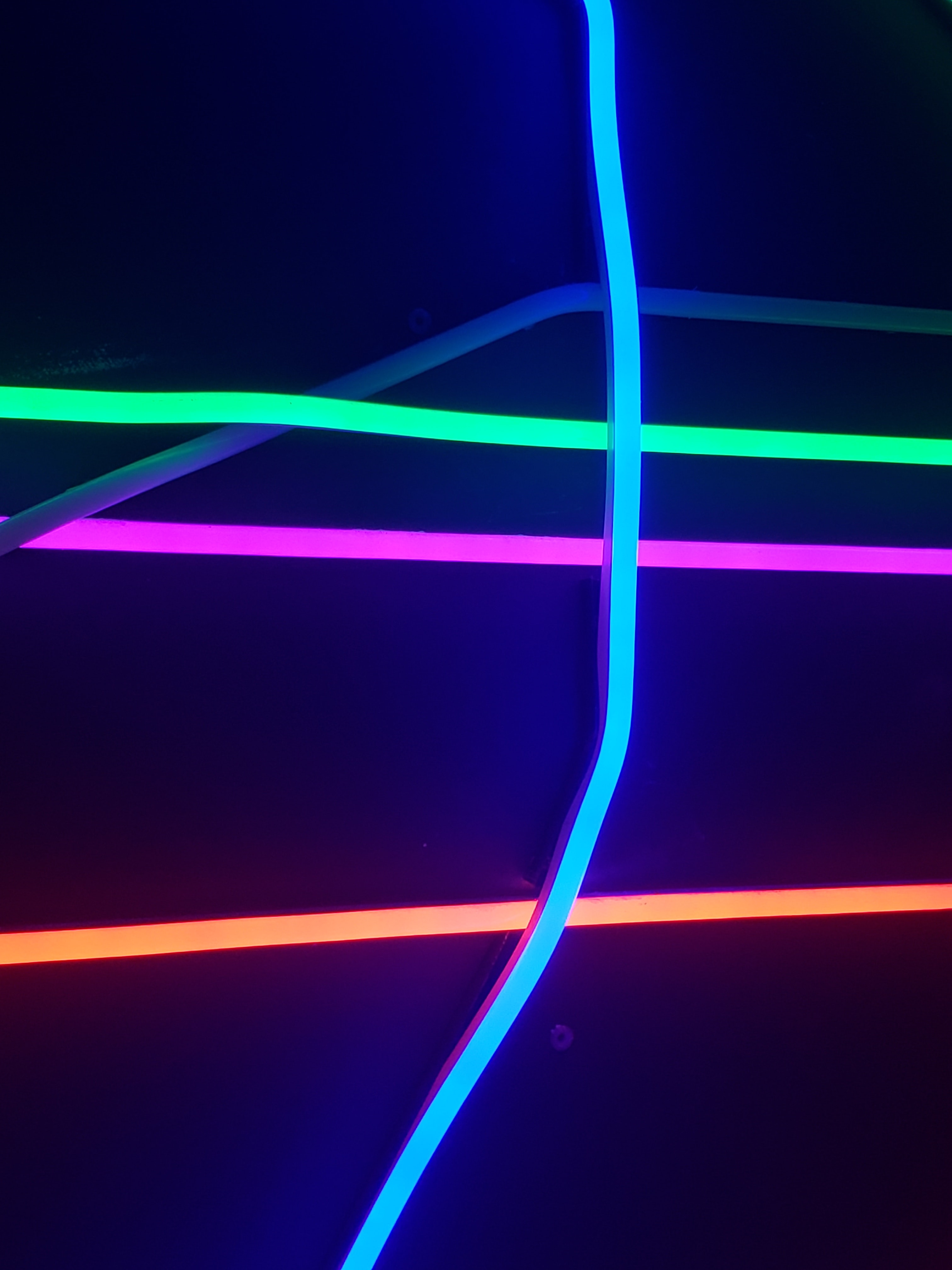I want to talk about our gateway products to open source. You know, that one product or software that made us go, “Whoa, this is amazing!” and got us hooked on the world of open source.
What made you to jump ships? Was it the “free” side of things like qBittorrent? Did you even know that some of your programs are open source before you got into the topic?
For me those products were:
- Android
- Firefox
- VLC
- Calibre
Am thinking to order some merch and I wanna make it more accessible to people unfamilliar with open source culture. Now, am looking for fairly normalized but still underrepresented product – maybe it could serve as a conversation starter and push some people to open source
My roommate installed Ubuntu on my laptop when I was in college. That was the start. Now it looks like this: https://xkcd.com/456/
deleted by creator
Man, that’s a rough entry point. I’ve been waiting for GIMP to get good for decades, and I’ve accepted now it’s probably not gonna happen.
You’re such a disappointment, GIMP. Blender is right there, why can’t you be more like Blender?
deleted by creator
Hah. Yeah, I guess it sucks having learned Photoshop before it was an outright scam, because there is no good alternative.
Let me caveat that: there’s actually great art software that’s either cheap or free and there are many basic quick photo editing apps. But broad image manipulation and in-depth photo editing? It’s GIMP or nothing, and GIMP is definitely not it.
Note that for vector graphics editing, Inkscape is really good. That doesn’t help you if you need to edit photos, though.
Yeah, it’s just that specific hole in the landscape where GIMP has become the default and nobody else is doing better despite being the part of the ecosystem that Adobe holds with the tightest grip. It’s extremely annoying.
deleted by creator
Not a graphic designer either, so I also use it for, say scanning documents and stuff like that. But I’ll be honest, if it takes more than that I’ll often just load into some mobile app meant for the edit I need to make just to avoid GIMP’s backwards UI.
deleted by creator
Yep. You either get the features but not the depth in mobile apps or the depth but not the features on GIMP.
It genuinely sucks. Because it’s not that the technology is proprietary at Adobe and can’t be replicated. Like I said, Blender holds up to the best of commercial software and it’s just as free. It’s that the GIMP guys haven’t quite found their way to that qualitative jump Blender took.
If you’re still looking, try Krita, it’s a polished and powerful open source image manipulation program.
I’ve tried Krita, but it’s primarily a painting tool, not really a Photoshop alternative for other tasks. It’s very solid for what it’s meant to do, though.
Makes sense. I never used Photoshop, so I don’t know how it compares. It’s been good enough for my needs so far.
Check out Krita. Krita is also free, but it’s amazing.
Yes, I’ve tried Krita. Krita is great. Go Krita. Krita is a painting program, though, not a full Photoshop replacement.
As, you know, we said in the post right above this one.
That was a different person
Perhaps you could specify which Photoshop feature it is that you need?
Linux. I think I started playing with it around 2001. I was a computer nerd on high school and I wanted to be a hacker. I would be lying if I said that The Matrix wasn’t a big factor. To this day I use black console with green text.
Classy!
Linux for me as well. It was endless customization that hooked me
For me it was first VLC without really knowing what FOSS was, then KeePass while getting to know a bit about it, and finally Thunderbird. What did it for me was just how good and bullshit-free they were, especially in comparison to paid competitors. They really are the best products in their field, proving the quality often behind FOSS software.
I like to think of FOSS as enshitification-proof
FOSS is enshitification-hardened, not proof.
VLC remains awesome because the guy (maybe Jean-Baptiste Kempf?) that controls the project has refused to be bought, has in fact refused HUGE sums of money.
The original author of any project has to right to sell it with the corresponding licence changes at any time.
There’s some legal grey area on something like Linux or VLC which have MANY MANY developer hands in the pie, and existing users could certainly fork off the existing releases, but VLC could pivot tomorrow to a for profit company and make future releases of the official VLC a paid product, if they choose too.True, and so all honour to the creators for remaining FOSS, especially smaller projects spearheaded by a single dev
Altough usually when a shift like that happens in bigger projects there’s a community fork, and the original project withers. Like Owncloud -> Nextcloud , OpenOffice -> LibreOffice, MySQL -> MariaDB
You could argue there’s some degree enshitification through the Ubuntu snapification driven by Canonical. Although that’s not so much about making Ubuntu deliberately worse, it’s more moving Ubuntu forward in a way that aligns with Canonical’s strategic goals. So its “paying the strategy tax” rather than direct enshitification.
For collaborative projects like Linux I believe every contributor would need to agree to any license change, which is practically impossible
Using linux as an alternative to windows and really enjoying it.
deleted by creator
Mint was my first distro. My interest begun with LibreOffice, then W10 got unusable for me and rest is history.
I distrohopped a year ago but returned to Mint
Mint was my first distro, too. Some videos from ExplainingComputers and Switched To Linux (before he was a bigot) got me interested in the distro, and then my uncle gave me an old ThinkPad and a DVD of Linux Mint 19.2 “Tessa”.
After that, I installed Linux on all of my computers. I switched to Debian, then Fedora, then distrohopped for a bit before landing on my current configuration:
- Garnet: openSUSE Tumbleweed with KDE Plasma
- Amethyst: Arch Linux with Sway (possibly soon to be Void with Qtile)
- Pearl: crunchbang++ 12 (32-bit) with Openbox
- LapisLazuli: Fedora 38 with MATE
deleted by creator
Whoever said Linux was hard to use was either a Windows/macOS shill, a Gentoo noob, or said it back in the '90s or 2000s when Linux was mostly quite hard to use.
deleted by creator
I just swapped to Linux, and it’s harder to use than windows, sort of.
I still can’t get one headphone jack to work on my case and my wifi printer/scanner can’t be controlled on the printer anymore. Troubleshooting has two modes, a step by step instructions set that either works or doesn’t, or highly technical stuff that is above my expertise.
Fair enough. I guess the hardware support can make it tricky.
I think it’s both an issue if hardware support and being the little guy.
If Linux wants to be bigger it needs to change it’s selling point. People have been conditioned to think of free software as bloated ad-fests by their phones. My wife was asking how I liked Linux and I could only describe apps as the early Android app store where everything was free and generally great.
Calling out Windows for privacy issues doesn’t have too much sway. Mostly because the damage is done, people have posted on Facebook and agreed to every tracker, what’s one more? Calling out Windows for being slower, showing you ads all the time and taking away features might have more traction.
@NumbersCanBeFun @graphito I distro shopped as well. Red hat, then Gentoo (5 years), then Debian (10 years) now arch (4 years). Each time there was an unavoidable reason forcing the change. Hopefully i never have to change from Arch again…
Firefox and VLC on Windows for years, which just worked. Later XBMC/Kodi and fileserver which where s… on windows but, again, just worked on Linux. When Windows later on kept nagging for something I migrated to 100% Open Source and have been a happy camper ever since!
Ubuntu Gnome GIMP
Gaim.
GIMP and Mozilla Browser were a couple of my early ones as a Windows user, but I probably saw those as worse, or at least less polished, versions of other software. Gaim (later Pidgin) was the one that first made an impression on me.
AIM was important software — it basically was social media to me at the time — and I’d stumbled into using third-party add-ons (for example, DeadAIM) for the official AIM client to add extra features and block the in-app ad banner. But it was always a cat-and-mouse game where AOL would try to block add-ons and the developers would have to work around that.
Gaim was refreshingly immune to all that stuff… it simply didn’t support ads, and all its advanced features were built-in. That it supported other messaging protocols was a nice surprise too, and to this day has soured me on siloed, proprietary messaging apps. The GTK UI also looked and felt a little exotic on Windows XP.
When I finally moved to Ubuntu, having apps like Gaim, Firefox and GIMP ready to go made things pretty comfy.
Getting a free Ubuntu live CD back in 2007 when I was a teenager. We had the shittiest internet, I think it was like 512kbps ADSL, so it was really hard to download software. No one I knew at the time was into linux or open source, so I learnt about it all from that Ubuntu CD and the smaller programs I downloaded with it once setting it up. I learnt GRUB and dual-booted it on the laptop I had for school.
There really wasn’t a specific gateway product, and I’m still using closed and open source solutions back to back.
User experience and user interface are more important to me than open source. The only consideration I have beyond that would be privacy & security.
For instance I’ve always used Firefox and rejected Chrome due to data privacy concerns, and would use a portable chromium installation if a website was inaccessible with FF. On the other hand side MS Office and Photoshop are vastly superior to libre office and gimp.
When it comes to applications I use once in a blue moon for a few minutes at a time, I’ll usually go for FOSS, but moreso because it’s free and the UI can be as ugly as it wants if I don’t have to stare at it for hours on end.
And well, I absolutely despise Apple as a company, so using Android was pretty much without alternatives, after BlackBerry discontinued their OS.
I’m very much the same. It mostly depends on “does the open source program do what I need/want?” If not, I’m okay with using a closed source version of it.
My current number one example here would be spreadsheet calculators. Years ago (and for my personal use) I only used LibreOffice/OpenOffice because it did/does all I need. But at work I need to use MS Excel not only because it’s what the company has but also because the tables function and everything that relates to it (like data slicers, automatic expansion of formulas and formats, etc.) is really awesome and either super complex to replicate or straight up impossible in LibreOffice. And a couple months ago I decided to optimize the Excel sheets at work by incorporating some VBA macros. It’s super useful and I couldn’t find an open source alternative to it that would not run into problems on existing VBA-Excel sheets very, very quickly.
On the other hand I have photo editing / art programs. For those, I happily hopped from one FOSS to another (GIMP to Krita and I think I had a third one at some point as well) because I actually only need the “basic” and “on the surface” tools of such programs. And so I never even began feeling a pressure to use a closed source program.
Apache. This was over 20 years ago. The web server that everyone seemed to be using was free to download and open source. That made a big impact on how I viewed free software, and encouraged me to use more of it.
The first FOSS product I ever used would have been either Firefox or OpenOffice.org, back in ~2010. I also used to like VLC.
The product that got me to go almost exclusively FOSS, however, was Linux Mint. I installed it on an old ThinkPad that my uncle had given me in 2019, and I was immediately impressed that this twelve-year-old notebook with (at the time) 4GB of RAM and an Intel Centrino processor could now easily outperform my brand new HP (which ran Windows).
It was only about a year later when I installed Mint on my HP, followed by my old Acer (which had been on a shelf for the last two years), and most recently my 2007 MacBook (which I keep around because it’s the only thing that can operate my scanner).
My first contact to FOSS were probably Firefox, Open Office (before libre office existed) and Gimp.
Mhm my first FOSS was probably The Gimp two or so decades ago. Previous to that I used Corel Draw and Paint Shop Pro. Suse Linux on a CD followed soon after as a test, but it didn’t hold me for long.
Wow. I also used to use GIMP about two decades ago, but I was a kid and I had no idea PS and Corel Draw existed back then. Since you mentioned already having experience with PS before Gimp, how did the two compare to each other at that time for you?
I didn’t had experience with Adobe Photoshop (PS) back then. But The Gimp was quite similiar to the features of Corel Paint Shop Pro. The UI was quite different though, as PSP (7.0) had everything contained in their Main Window whereas The Gimp (2.0) was using the floating panels.
Paint Shop Pro. . .
Now that’s a name I haven’t heard in years.
Audacity! All hail the GOAT FOSS!














